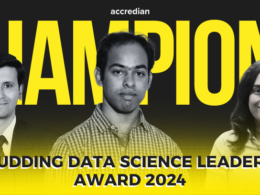Data is a driving agent for most tech giants, and Spotify is no exception. Millions of users have been streaming and releasing music on Spotify, which has increased the data banks at Spotify for an easy user experience.
Therefore Data Scientists are being hired at full speed to handle this efficiently.
What does a Data Scientist do at Spotify?
Data Scientists at Spotify are ought to have a good understanding of databases and knowledge of various programming languages such as Python and SQL. They must have a good hold of concepts regarding Data Structures and Algorithms and have practical experience based on these.

How long is the Spotify interview process?
The Data Scientist role specific interview is a 3 round process.
- The first round is a recruiter phone screen, where the agenda will be to discuss past experiences and an explanation of your role at Spotify.
- The next round is the technical phone screen, in which you should expect questions based on Data Science concepts, coding and SQL.
- The last is the on-site round, which consists of 4 interview loops, namely Programming Test, System Design, Cultural Fit (Behavioural Round) and Data Science Interview.
Spotify Data Scientist Interview Rounds
Round 1- Recruiter Phone Screen
This is a general call with the recruiter and is mostly non-technical. This round lasts around 30 minutes and focuses on if you are a good fit for the role and the company. This is mostly an informal discussion about your experiences, resume and past projects.
Pro Tip: While answering the question- ‘Tell me about yourself’, talk about the most relevant and recent experiences that highlight your skillset.
Round 2- Technical Phone Screen
This round consists of a 1 hour video interview with two developers from Spotify. The round will consist of questions mostly related to Data Science and CS concepts, coding problems and SQL.
In addition, they may also want to know about your work experience and ask technical questions based on it. This process may follow the format of collaborative problem-solving.
The interviewer will assess you on the basis of your command over SQL and how well you can handle the cross questioning. Similarly your theoretical and practical understanding of Data Science will be judged.
Pro Tip: Make sure you are up to date with your SQL and coding skills. If not, do brush up before the interview.
Round 3- Onsite Screen
This onsite round is the final set of interviews which will consist of 4 loops.
- The programming test is a coding test consisting of problems on data structures. The interviewer may also ask questions on memory management in case of large amounts of data.
- In the system design test, you will be required to design a large-scale system, and the interviewer will analyze your train of thought and how you process and use the given information. You may also be tested on the fundamentals of SQL.
- The behavioural round is an in-depth discussion of your project experience as well as technical questions related to the same.
- The data interview consists of a discussion about your experiences, general trivia, and coding questions. The trivia questions can be based on algorithms, LINUX/UNIX, statistics and data engineering.
Pro Tip: Be well versed with the fundamentals of Data Science. You should be able to successfully answer their questions.
 Pin
Pin20 frequently asked questions at the Spotify Data Scientist Interview
Here are some questions that you should consider practicing on:
EASY
- State the difference between a Validation Set and a Test Set.
- Explain the term Binomial Probability Formula?
- What is a recall?
- Discuss normal distribution.
- While working on a data set, how can you select important variables? Explain.
- What does NLP stand for?
- What is Lasso Regression ?
- What Is the Law of Large Numbers?
- What Are Confounding Variables?
- Why do we generally use Softmax nonlinearity function as the last operation in-network?
INTERMEDIATE
- Explain the benefits of using statistics by Data Scientists.
- Explain why Data Cleansing is essential and which method you use to maintain clean data.
- How do you overcome challenges to your findings?
- Is it possible to capture the correlation between continuous and categorical variables?
- Treating a categorical variable as a continuous variable would result in a better predictive model?
- List the differences between supervised and unsupervised learning.
- What is Selection Bias?
HARD
- In any 15-minute interval, there is a 20% probability that you will see at least one shooting star. What is the probability that you see at least one shooting star in the period of an hour?
- How can you generate a random number between 1–7 with only a die?
- A certain couple tells you that they have two children, at least one of which is a girl. What is the probability that they have two girls?
If you are interested in such blogs, check out more here. For career related blogs click here.






